While gathering information in order to continue the initial article Pyramids: the mystery that may be finally unravelled, we could not omit the mysterious pyramids of China, which are still poorly studied though being very interesting for many researchers. It is assumed they are underexplored because Chinese authorities are unwilling to let researchers there. Moreover, many archaeologists and scientists of other fields have a too one-sided, politically determined attitude to ancient artefacts. Well, according to the AllatRa book: “In the creaking cart of purely materialistic worldview, one cannot go far in real science. Still, sooner or later a real scientist will get to such scientific horizons where it will not be possible to use the existing props on which the entire chain of human reasoning rests.”
So, let’s plunge into information currently available on the web. Perhaps, if we collect all relevant facts together we will be able to compose another interesting picture.
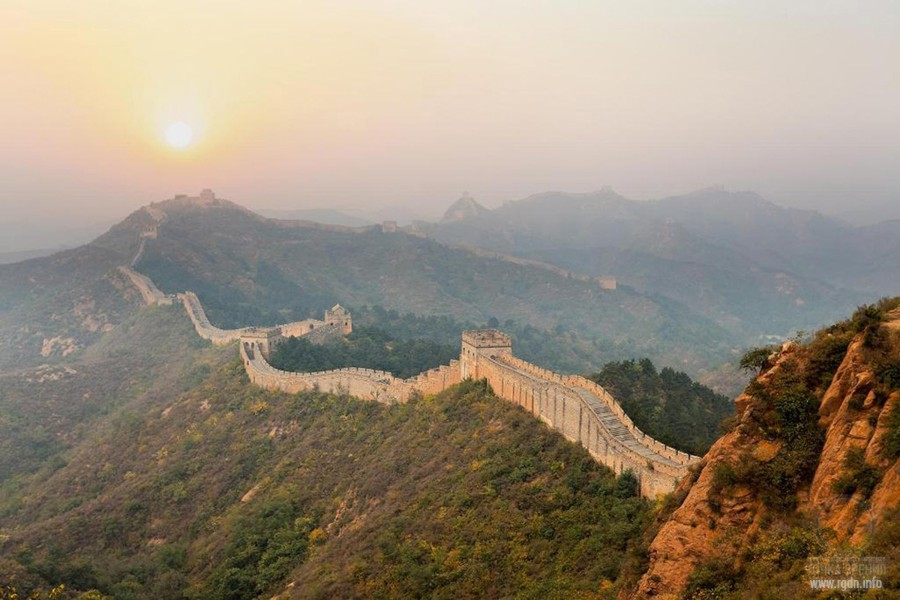
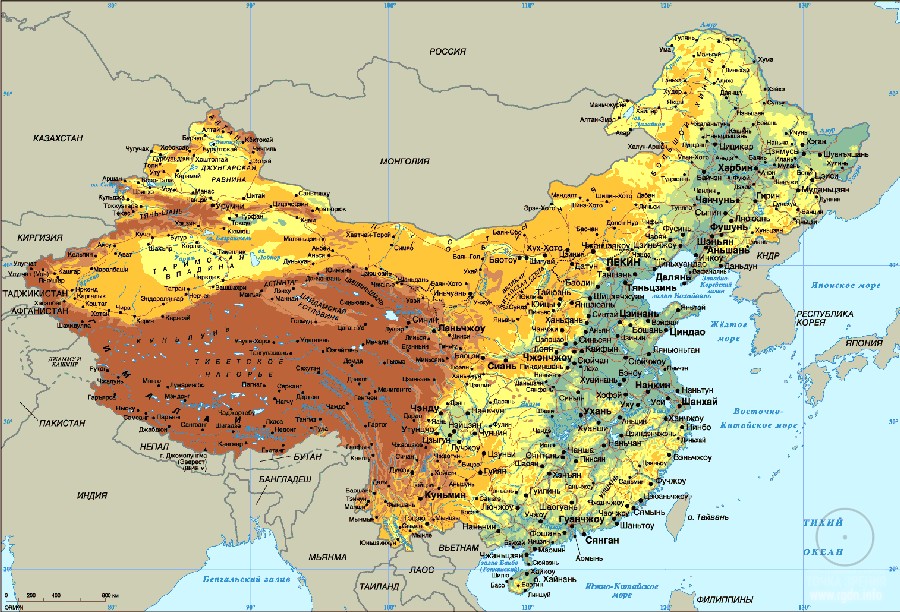
To begin with, let’s refer to generally known data on the history of discovery of Chinese pyramids. Unfortunately, we can hardly verify the authenticity of such data, nevertheless…
- In 1945, one of giant pyramids was noticed by the American air force pilot James Gaussman when he flew above KinLinXiangMountains near the city of Xi’an in Central China. He was astonished at the pyramid size and that fact it’s made of a white shining material (we won’t comment this information, for anything can happen as they say). According to some internet sources, Gaussman photographed the marvellous structure, but the image disappeared from archives later on.
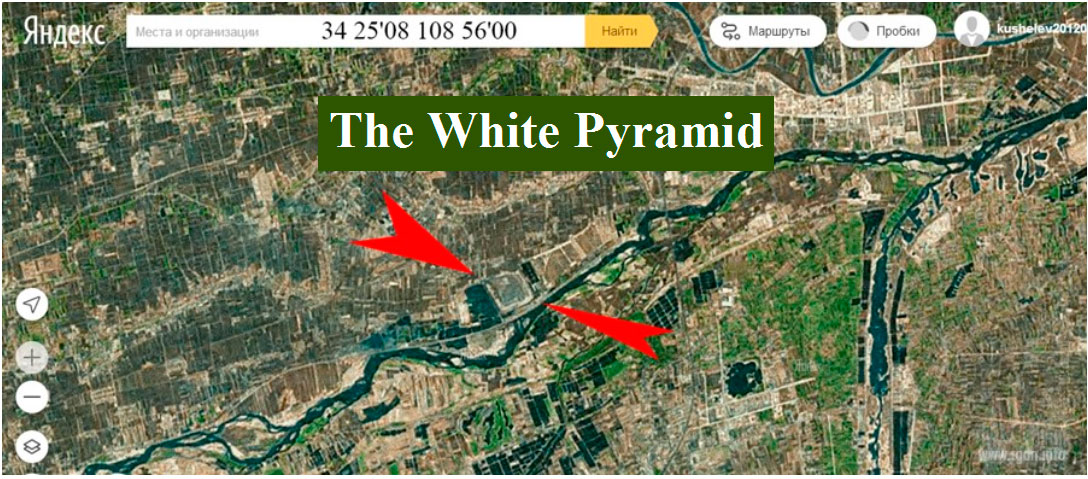
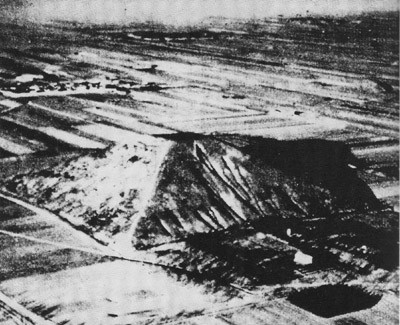 - In 1960s, the Chinese pyramids were spotted by the New Zealand aviator Bruce Cathie. In the same period of time the diaries of two Australian traders – Fred Meyer Schroder and Oscar Maman – were found. They had visited Shaanxi (formerly Shensi) in the early 20th century, and later on (in 1963) according to some sources Bruce Cathie discovered Schroder’s diary and article written in 1912. Schroder originated from Australia, but lived in China and guided caravans from the Great Wall far inland. He was interested in esotericism and entered records in his diary about the Chinese pyramids described to him by a spiritual guru from Mongolia, named Bogdykhan. He mentioned there were seven big pyramids in China, located near the ancient capital city of Sian Fu (contemporary Xi’an). A record in Schroder’s diary: "We approached them from the east and saw that it was in the northern group of three giants, and the rest of the pyramids consistently decreased in size to the smallest in the south. They extended to six or eight miles across the plains, towering over cultivated land and settlements. They were under the noses of the people and were totally unknown to the western world.”
- In 1960s, the Chinese pyramids were spotted by the New Zealand aviator Bruce Cathie. In the same period of time the diaries of two Australian traders – Fred Meyer Schroder and Oscar Maman – were found. They had visited Shaanxi (formerly Shensi) in the early 20th century, and later on (in 1963) according to some sources Bruce Cathie discovered Schroder’s diary and article written in 1912. Schroder originated from Australia, but lived in China and guided caravans from the Great Wall far inland. He was interested in esotericism and entered records in his diary about the Chinese pyramids described to him by a spiritual guru from Mongolia, named Bogdykhan. He mentioned there were seven big pyramids in China, located near the ancient capital city of Sian Fu (contemporary Xi’an). A record in Schroder’s diary: "We approached them from the east and saw that it was in the northern group of three giants, and the rest of the pyramids consistently decreased in size to the smallest in the south. They extended to six or eight miles across the plains, towering over cultivated land and settlements. They were under the noses of the people and were totally unknown to the western world.”
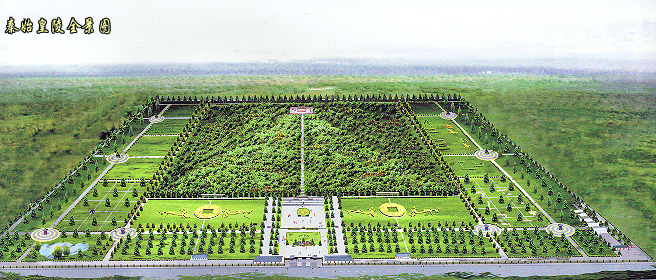
Several other records in Schroder’s diary indicate the following: the largest pyramid was about 300 metres in height (i.e. almost two times higher than the Pyramid of Cheops) and around 500 metres at the base (again, it’s nearly two times more than the Great Pyramid of Giza). Schroder also mentioned the four pyramid sides were oriented accurately to cardinal points and had colours corresponding to the cardinal directions – black, greenish blue, red, and white. Some sources state different colours of the pyramid sides are similar to the knowledge and legends of Maya Indians about the cardinal directions. In particular, Maya believed that heaven had four sides and four corners, where every corner had its colour: the northern corner was black, the eastern was red, the southern was blue, and the western was white. Furthermore, the pyramid supposedly had a flat top covered with yellow soil. We surely cannot say how reliable the information is regarding the different colours of the pyramid sides, as given in Schroder’s diary, but I guess here it’s appropriate and informative to cite an extract from the AllatRa book where there is a mention of the Four Aspects in the human energy structure, with their colour characteristics according to the cardinal directions, as customary in China:
Rigden: …References to the four Aspects with the centre – the Soul, are present also in Asia, particularly in the ancient Chinese mythology. Such a collective concept as Wu Ti means five mythological characters, each of which has its own assistants. This term was used by the ancient Chinese to denote the “abstract spirits of the five elements.” Wu Ti is mentioned in the ancient book Zhou li (The Rites of Zhou). Various ancient philosophers deciphered the Wu Ti concept in their own way: some wrote that this meant “the five deities”, others wrote about “the five emperors”, still others – about “the five of the greats.” In any case, this notion was equated to the symbol of five directions (the four cardinal points and the centre).
These symbols were so important in the ancient Chinese ritual tradition that their images were placed nearly everywhere: on emblems, banners, in art, in architecture (including bas-reliefs on gravestones). At that, they were located in a specific order related to one or another ritual. For example, banners, each of which was marked with one of the symbols of the “five directions”, were carried in a special order when the army was moving. Ahead, as a symbol of the Front Aspect, they carried a banner with the image of Zhu Que (the Vermilion Bird) symbolising the south, which was a respected cardinal direction among the Chinese. Behind, as a symbol of the Rear Aspect, they carried a banner with the image of Xuan Wu (a turtle entwined with a snake) – the symbol of the north. On the left, as a symbol of the Left Aspect, there was a banner with an image of Qing Long (the green dragon) – the symbol of the east. On the right, as a symbol of the Right Aspect, they carried a banner with an image of Bai Hu (the white tiger) – the symbol of the west. However, for a knowledgeable person it is enough just to have a look at characteristics of these collective concepts in order to understand what is really meant here, taking into account the peculiarities of the worldview of this nation.” (pages 242-243 – allatra.us)
“I captured the spirit of this magnificent spectacle,” Schroder wrote. “We drove around in search of the pyramid entrance, but did not find anything.” When Schroder asked Bogdykhan about the age of the pyramids, he said that it’s more than five thousand years. When asked why he believed so, Bogdyhan said: "In our oldest books written five thousand years ago, these are referred to as the ancient pyramids. They were built in the times of ancient emperors who said they had originated from the Sons of Heaven that had descended to the earth on their fiery metal dragons.”
Bruce Cathie took a great interest in the subject, collected all the available information and sketched 16 pyramids located near Xi’an.
In 1974, China announced the discovery of the Terracotta Army in the emperor’s Qin Shi Huang necropolis situated two kilometres away from one of the pyramids.
In 1966, an archaeological expedition was first admitted to the pyramids. However, archaeologists didn’t have time to do their job because the Cultural Revolution headed by Mao Zedong took place in the country. At that, according to some sources, the library collected by Buddhist monks for several thousand years was destroyed in Shaanxi province. Researchers say the library contained unique written records of the pyramid constructors, and those records were lost.
In 1994, Hartwig Hausdorf (German researcher and traveller or head of a German travel agency, according to different sources) visited the pyramid valley together with Julia Zimmerman and Peter Cruss. They took pictures of and described six pyramids (three in the area of Xi’an airport and three near the town of Mao Lin). In 1996, they continued their research and discovered about 30 pyramids in one of Shaanxi districts, which pyramids are located separately or in groups of three or more. Most of the pyramids have 60 to 70 metres in height, and one of them as Hausdorf asserts is very similar to the Pyramid of the Sun in Teotihuacan (Mexico).
A question arises who permitted exactly there researchers to take pictures in places prohibited for tourists, and why Hausdorf never published any of his photos. According to some sources, the three researchers failed to find the huge white pyramid photographed by Gaussman. Later on Hausdorf published a book entitled The White Pyramid, which contains little specifics, but is the first book about the Chinese pyramids. Relying on the works by Helena Blavatsky who wrote about pyramids oriented on the four cardinal points and on astronomical objects and built by precise math calculations, Hausdorf believed the Chinese pyramids were of extraterrestrial origin. Generally speaking, once Hausdorf’s book was released rumours started to accumulate about the White Pyramid and its story both in media and on the web, perhaps because very few people had attended the Chinese pyramid valley over a rather long period of time. The White Pyramid is supposedly located in Shaanxi province, 120 km away from Xi’an, at latitude 34 north and longitude 108 east.
For all that, in 2000 Chinese authorities made the information about the pyramids public. Some of the pyramids are now accessible, e.g. the Maolin Mound, Mausoleum of the First Qin Emperor (QinShi Huang), Tsang Lin Mausoleum, and a pyramid in YaSen Garden.
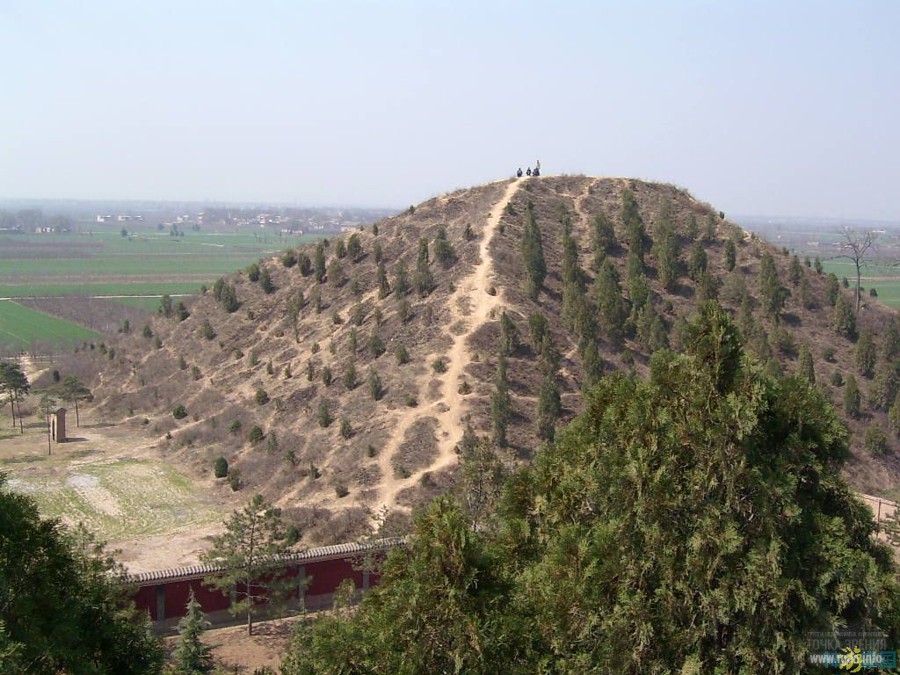
As for the rest of the pyramids, including the (Great) White Pyramid, Chinese authorities have still given no access to them for an unknown reason.
Russian traveller Maxim Yakovenko was one of those who attempted to find out more about the pyramids. He visited the Library of Congress, USA, and discovered there a story of that very American pilot James Gaussman who had photographed the White Pyramid. They say there is still no official detailed map of the pyramid valley in China, so Yakovenko used satellite images for his study. He wrote that official science ascribed the pyramids to royal sepulchres of the Chinese dynasties Qin (221-207 BC), Western Han (206 BC – 7 AD), Eastern Han (25-220 AD), Jin (265-419 AD), and Tang (618-907 AD). Thus, if we take as an example the pyramid known as the Mausoleum of the First Qin Emperor (QinShi Huang) with the Terracotta Army to the east of the sepulchre mound (60 km away from Xi’an), there are no sources other than descriptions of the Mausoleum by the historian and poet Sima Qian (whose accurate dates of birth and death are still disputable), which would confirm the pyramid is exactly a sepulchre. Here’s what Yakovenko says apropos of this: “The most interesting thing is that historian Sima Qian lived a century after QinShi Huang’s death and wrote the emperor’s biography based on unknown sources. Perhaps, Sima Qian was relying on a source of QinShi Huang’s time? Hence, there is no written evidence that the huge pyramidal structure represented QinShi Huang’s tomb 2200 years ago. Studies of the pyramid have been carried out for over 40 years; thousands of figurines, gold and silver items have been found, but there is not a single evidence of the emperor’s tomb presence there. Moreover, no excavations are allowed at the pyramid itself.”
- On 2 July 2007, Chinese archaeologists summarized their five-year-long study of QinShi Huang’s mound with the use of sensor means (radars and distance data collection devices). It turns out inside the mound there is a huge (about 30-metre) nine-stepped pyramid. Scientists don’t mention what the pyramid is made of. Excavations have not been officially started at the site until today, although archaeologists of the ChineseAcademy of Sciences assert the pyramid is unique and unlike to any other discovered tombs of Chinese emperors. Some researchers assume this pyramid is a sort of a corridor along which the soul of QinShi Huang went to the heaven after his death.
Locations of the pyramids
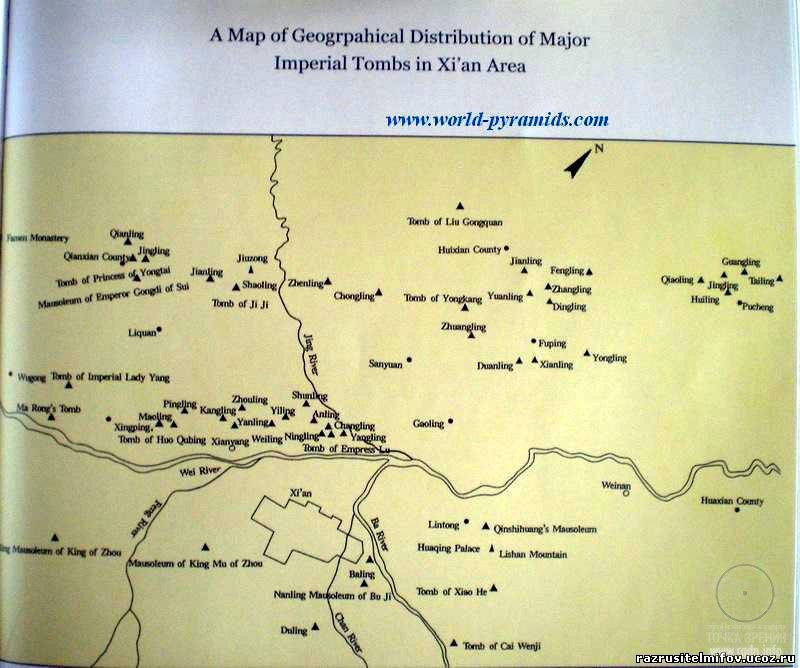
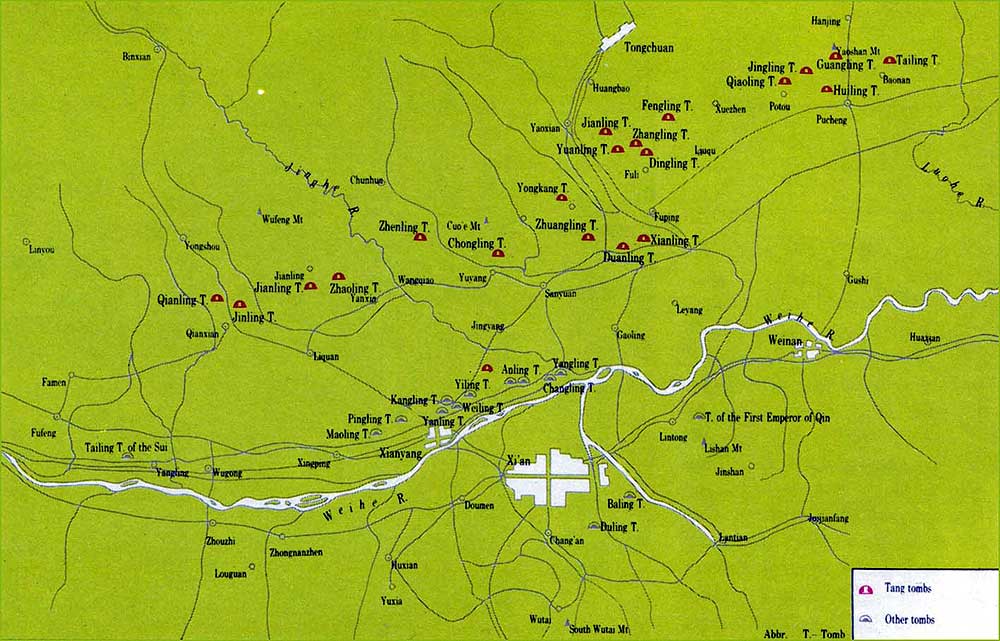
Pyramids surround Xi’an on all sides and are even found within the city. A vast pyramid valley is situated to the north of Xi’an, in the neighbouring city of Xianyang. Stretching from the east to the west for 50 km, the valley resembles the Milky Way. Owing to Hausdorf, this site is known to the global community better than any other place of such kind in China.
According to researchers, to the northwest of Xi’an and Xianyang there is another valley with pyramids that are much higher, more interesting and totally unknown. The legendary White Pyramid is situated there as well. 70 km to the northeast of Xi’an there is also an area of unexplored pyramids.
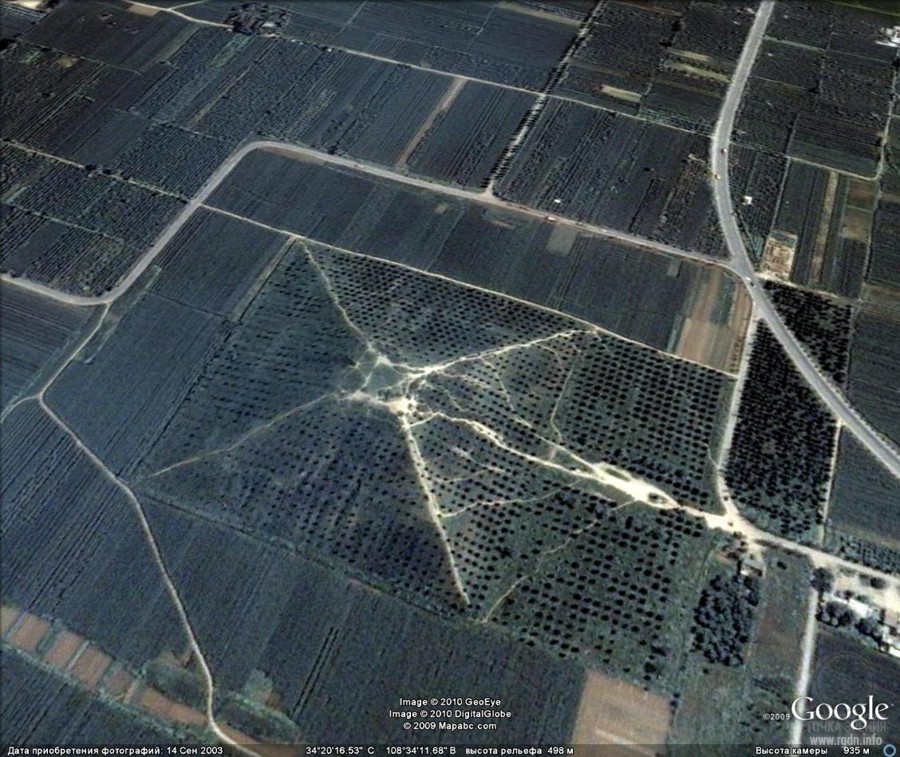
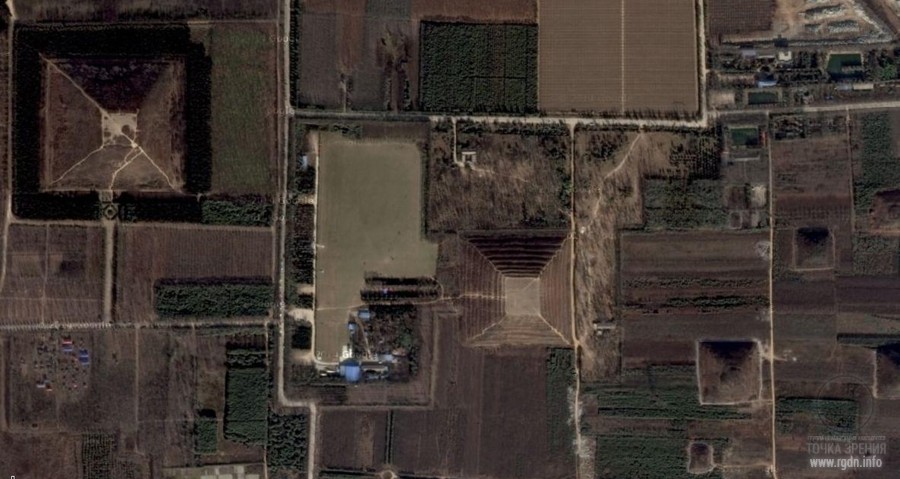
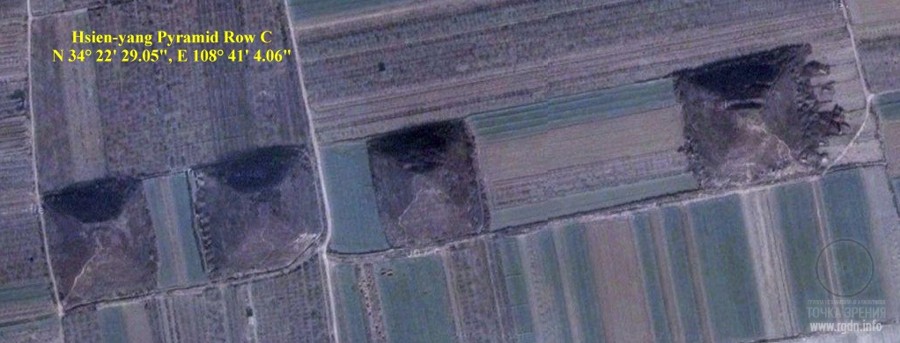
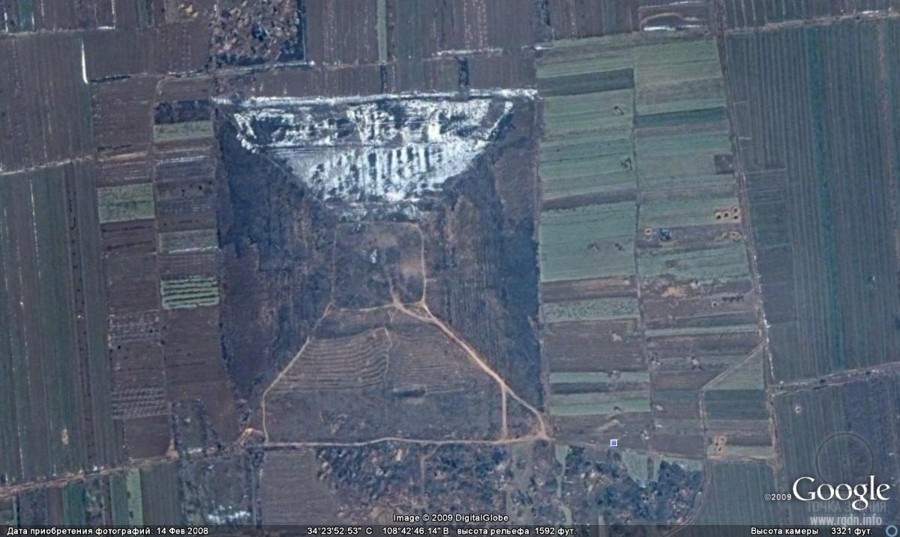
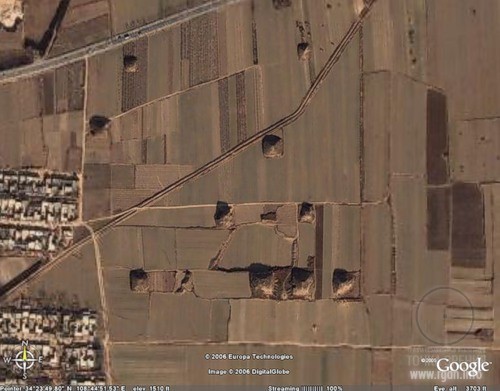
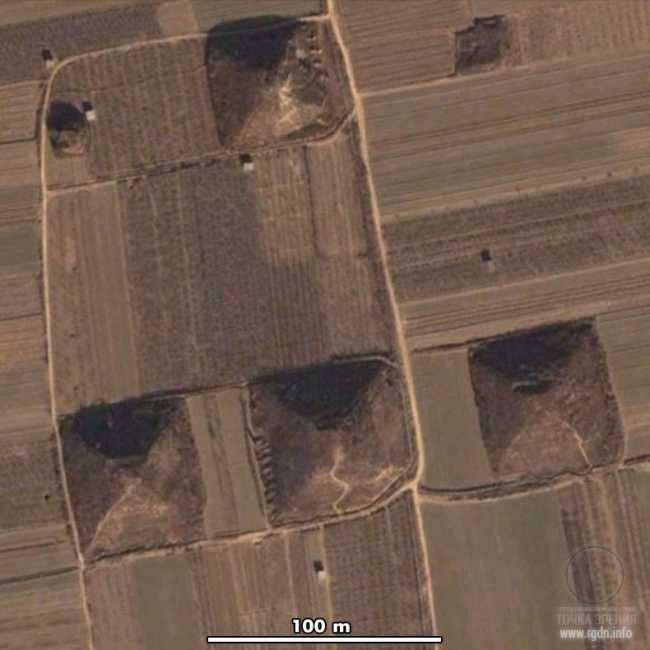
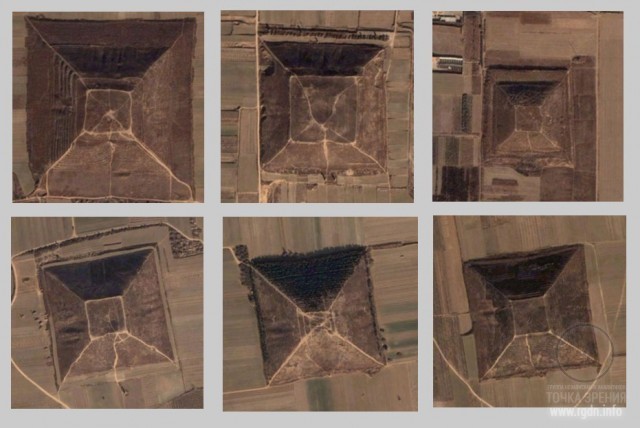
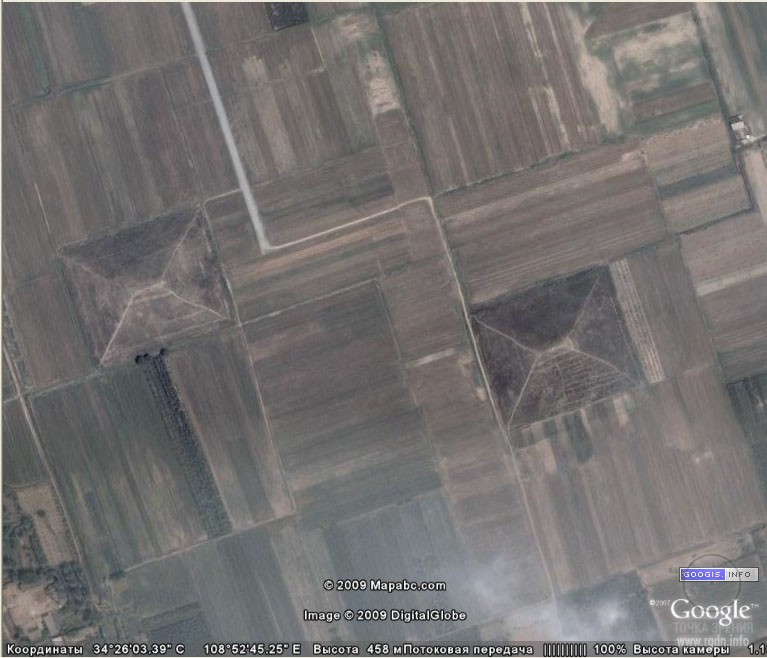
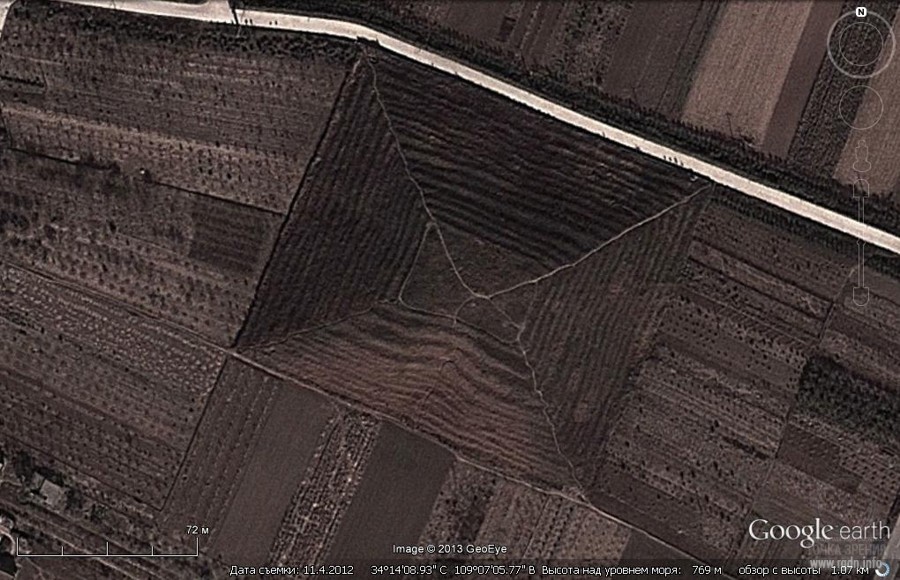
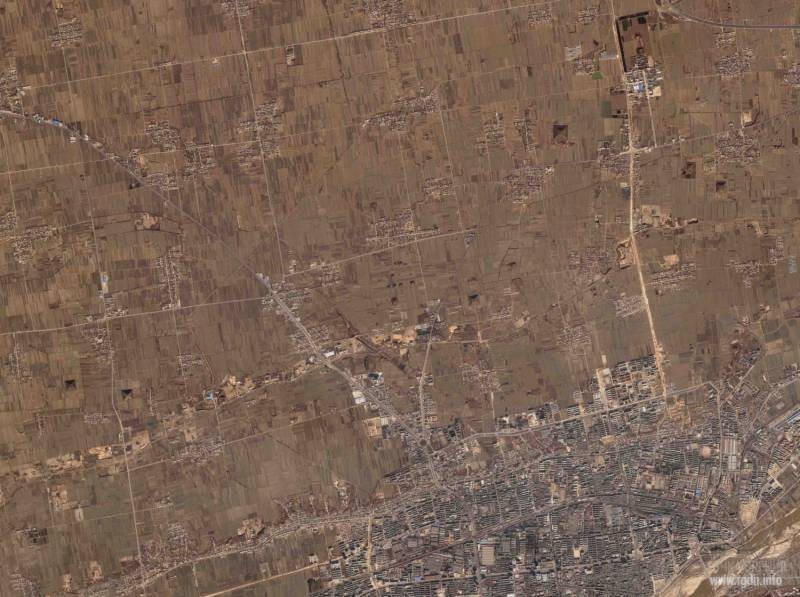
“A common feature of all pyramids is the material they are built of – loess. In the aforesaid valleys the rocks and soils are sedimentary, homogeneous, loamy, pale yellow, which is designated as loess. Clay and limestone particles make up about 30% of loess content, so it’s a rather solid material. It resembles clay in appearance, so it’s often called clay. All pyramids may be divided into those oriented accurately on the four cardinal points and those having a slight deviation to the northwest towards Greenland. The reason for such orientations is still to be investigated.” (M. Yakovenko)
Yet, the reason of that has been found a certain while ago. Suffice it to refer to Uvarov’s study of 2008, which indicates that around 10.5 thousand BC the North Pole was near Greenland. Hence, all pyramids with a deviated northwest orientation were built in the Upper Paleolithic, not later.
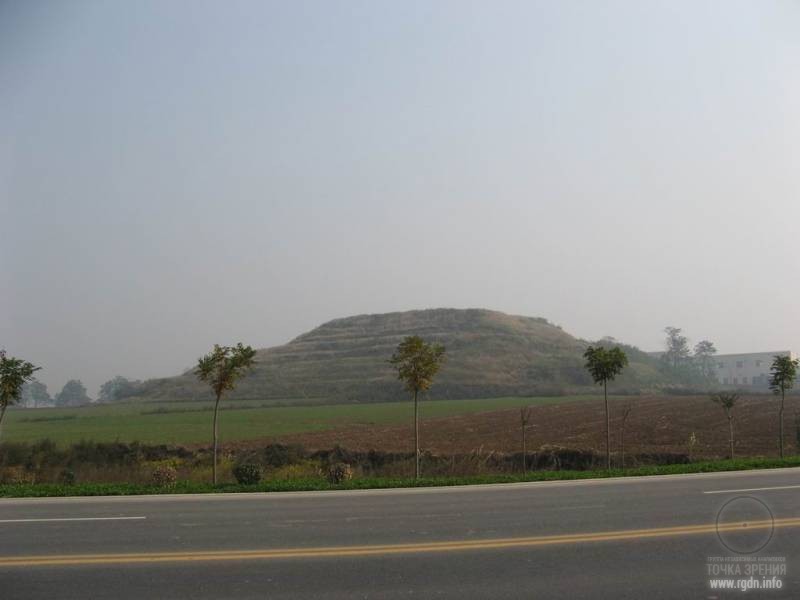
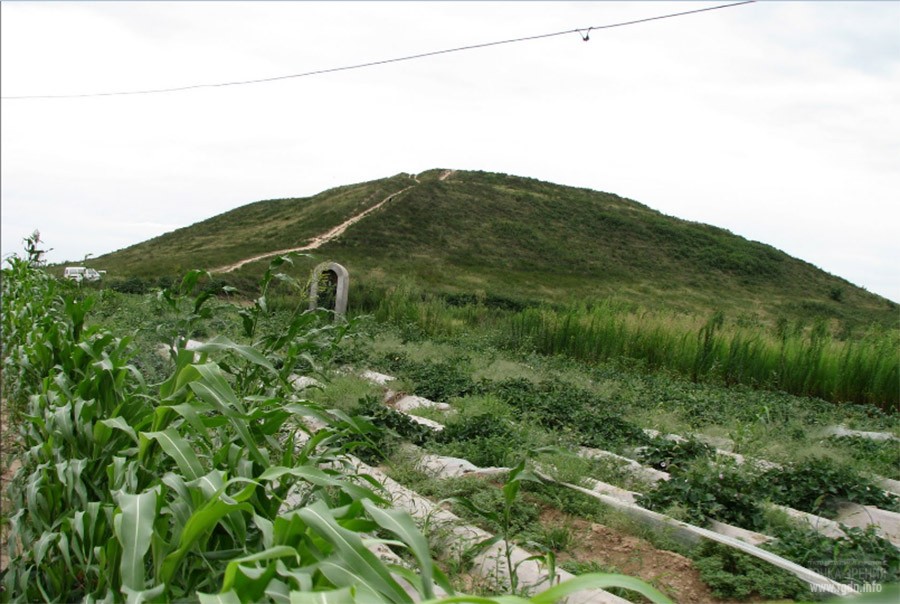
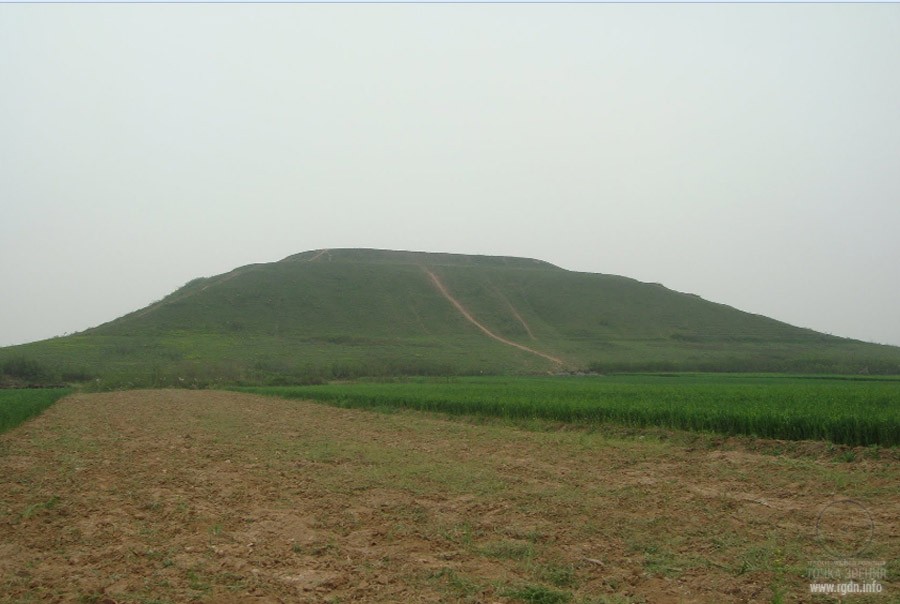
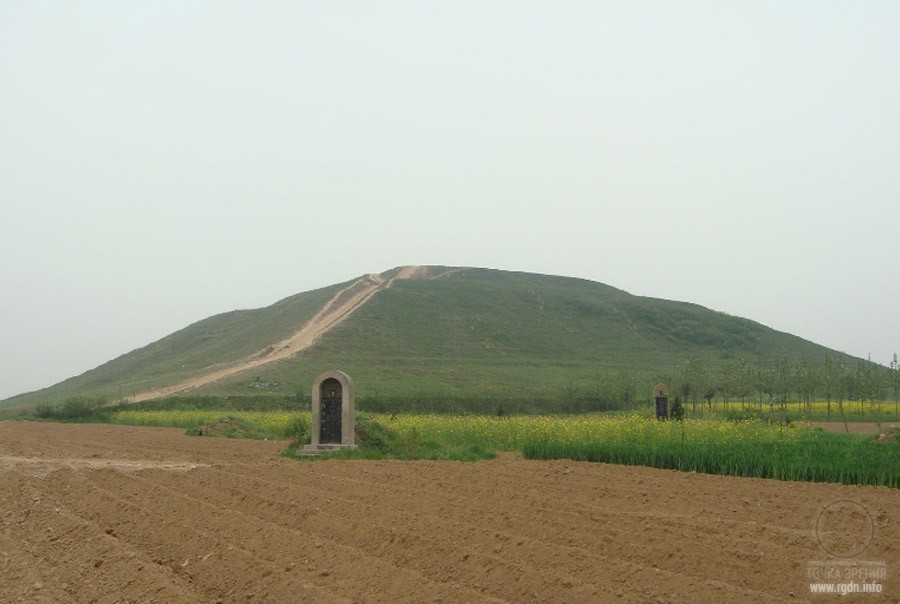
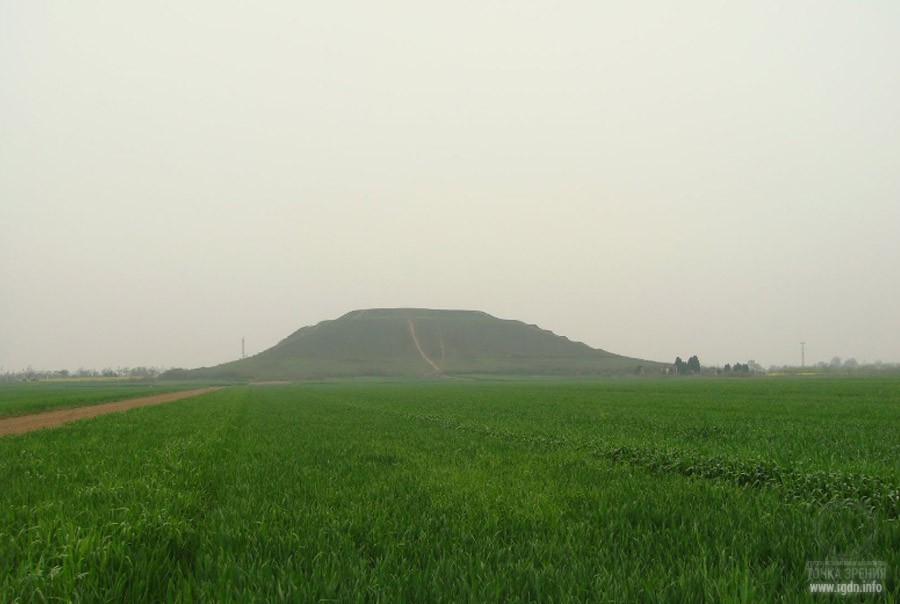
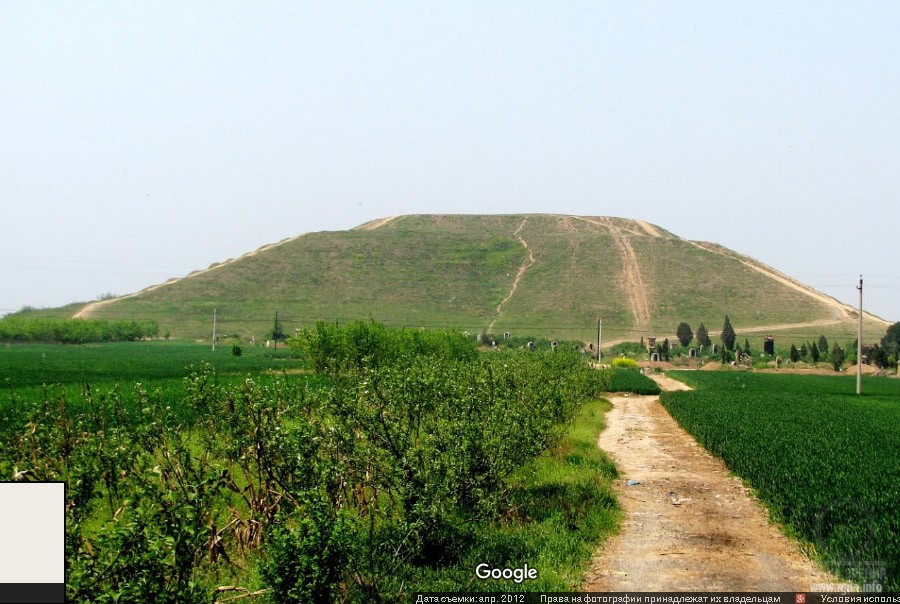
Below, there is a classification of pyramids, which we’ve found on the internet.
By the base type:
Most pyramids are square in base, though there are those with rectangular bases, more resembling huge cone-shaped artificial mounds. However, since the latter have parallel sides of equal length we will label them as pyramids of a special kind. There are also pyramids standing on vast, but not high (up to 3 metres) square embankments or platforms; they are poorly seen in satellite images, but well noticeable locally.
By the top type:
A truncated pyramid is the most widespread shape. When such structures reach 40-50 metres in height, their top ground is quite impressive – up to 50х50 metres. All of them resemble the Mexican pyramids, and in terms of geometry their shape is prismatic. There are also pyramids with relatively sharp tops similar to those in Egypt, but they are few and most of them are lower than 40 metres. Yet, there is a third type of pyramid tops – hollowed, forming an ideal-shaped spherical hollow that eliminates the assumption of clay subsidence. It is known that in the valleys around Xi’an and Xianyang there is only one pyramid of such kind, 17-20 metres in height.
By the number of steps:
Chinese pyramids may also be divided into stepped and non-stepped. Stepped pyramids in turn are divided into multi-stepped and single-stepped. Pyramid steps represent terraces of 1 to 2 metres in height. Their purpose is unknown, especially when such steps reach the middle of a pyramid, then disappear and appear closer to the top. Pyramids with terraces or platforms on the top greatly resemble the Pyramid of the Sun, the Pyramid of the Moon, and other Mexican pyramids.
An antipodal pyramid. 40 km away from Xi’an there is a very unusual pyramid resembling a quarry. Being on the site with satellite images one comes to understand it’s a mirror reflection of a pyramid. An impression arises that the pyramid was turned over, dug into the ground and then taken out. Hence, there is a “mirror reflection” – a pyramid antipode.
Mixed pyramids. This type includes nearly all small pyramids of up to 10 metres in height, including cone-shaped structures with steps on one or two sides only. Since the number of small pyramids may equal to several hundreds, they are subject to further exploration.
Moreover, there is a pyramid type that does not fit into any of the aforesaid categories, for it applies to the (Great) White Pyramid only.
According to ancient Chinese legends preserved until today, construction of the pyramids took place during the reign of emperors who originated from the Sons of Heaven – those who had “descended to the earth on their fiery metal dragons”.
Among the Sons of Heaven, legendary Huangdi and several of his assistants are ranked. Huangdi is highly revered in China and regarded as the founder of the Chinese nation. Official data indicate he ruled between 2692 and 2592 BC.
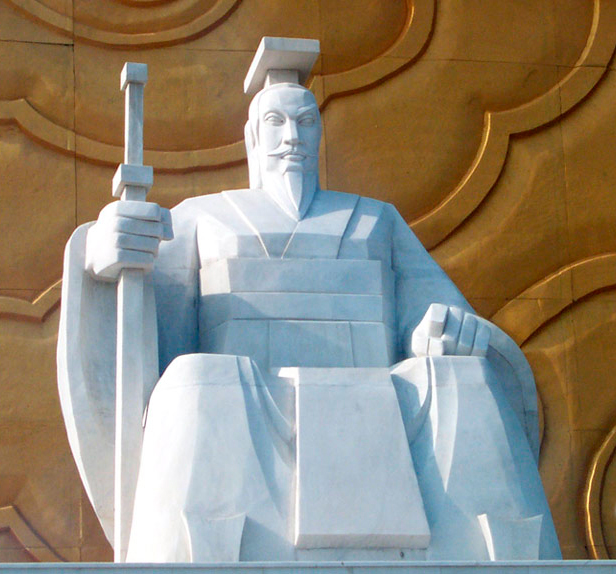
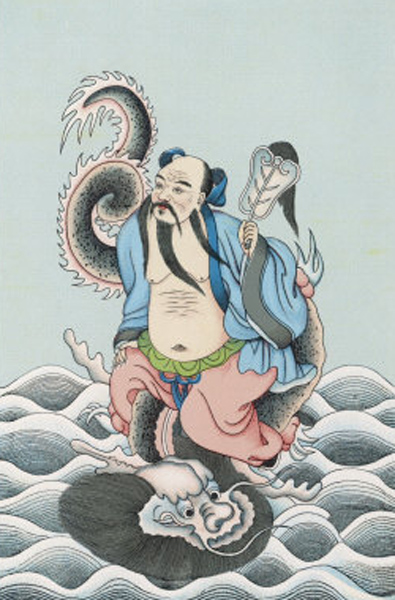
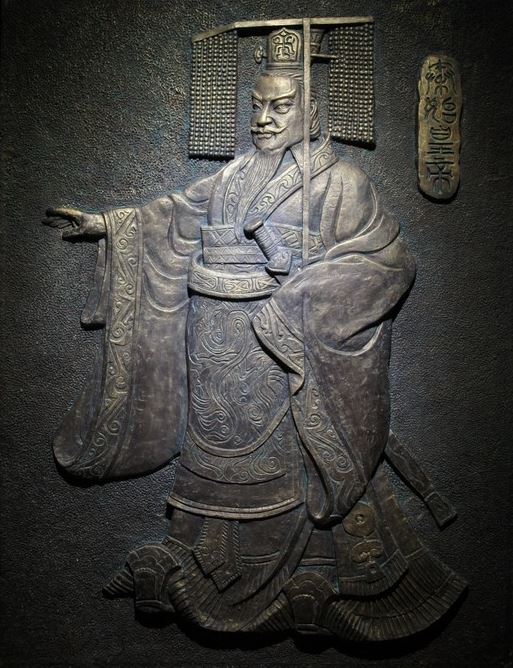
Below, there are several interesting facts about Huangdi, which we won’t comment so far:
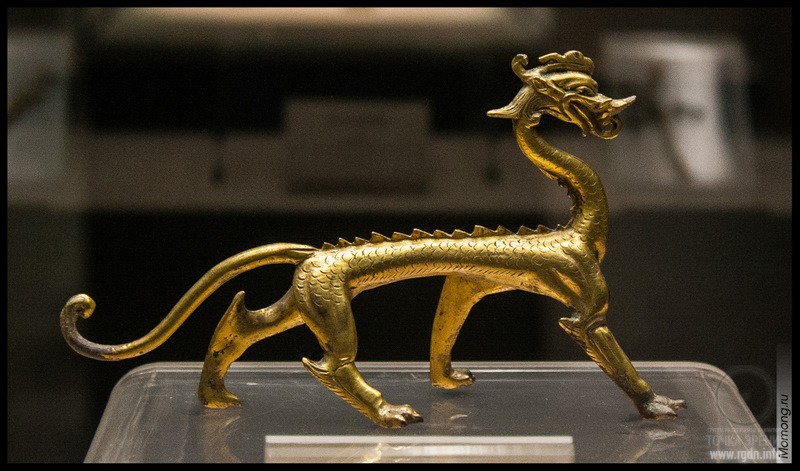
A dragon statue in Xi’an Museum
Quite interestingly, there is information about Huangdi in the AllatRa book, again in the context of the knowledge of the pyramidal human energy structure and the four human Aspects. By the way, this is one more proof that pyramidal buildings were popular in ancient times all over the world not without reason, not to mention the true purpose of majestic structures of such kind.
Information about Huangdi in AllatRa:
Anastasia: Indeed, the one who established this tradition obviously knew more about the invisible world… Besides, these concepts sound familiar… You said that the Wu Ti concept was equated to the symbol of the five cardinal directions or points, or five deities. Incidentally, is Huangdi (the Yellow Emperor) the fifth sovereign, the centre of these four cardinal directions, four deities?
Rigden: Absolutely. Huangdi, or the spirit named Hanshu-nu (“he who has swallowed a rod”). The embodiment of his spirit is the unicorn Qilin – a symbol of the centre.
Anastasia: In essence, this is a prototype of designation of the Soul – the centre of the invisible human structure and an indication of its connection with the Front Aspect (the symbol of which was the unicorn).
Rigden: Let us take a closer look at the characteristics of these characters. Huangdi means not only “the yellow emperor”, but also “the shining (light-emitting) sovereign.” This symbol of the centre was actually regarded as the supreme heavenly deity. He was depicted with four eyes and four faces. Such tradition originated from ancient Chinese shamans who put on a relevant four-eyed mask during sacred rituals. Why was precisely a four-eyed symbol depicted? First of all, this relates to the conventional designation of the four Aspects. Secondly, this is because, while performing certain meditative techniques, man obtains the so-called all-embracing vision of the visible and the invisible worlds – a simultaneous vision of everything that happens around him and sometimes even in other dimensions. Such capabilities are not available to the ordinary human vision in the usual three-dimensional world. But should a person alter one’s state of consciousness, obstacles disappear before his or her inner vision.
There is another interesting fragment in the AllatRa book, regarding Huangdi’s medical writings:
Rigden: The Chinese tradition links the beginning of healing and medicine as a science exactly to the name of Huangdi. Moreover, the aforesaid medical treatise Huangdi Neijing itself is translated as The Inner Canon of Huangdi. Everything outer, physical, originates from the inner. Incidentally, legends say that Huangdi’s supporter named Tsang-chieh (Fu-hsi in other versions) invented hieroglyphic writing, that is, sacred writings in signs. By the way, this culture hero was also depicted on ancient bas-reliefs with four eyes as a symbol of exceptional astuteness. According to the legend, he was able to compose signs because he had penetrated the deepest meaning of tracks of birds and animals. (pages 243-245 – allatra.us)
A satellite image of the pyramids in YaSenGarden (China):
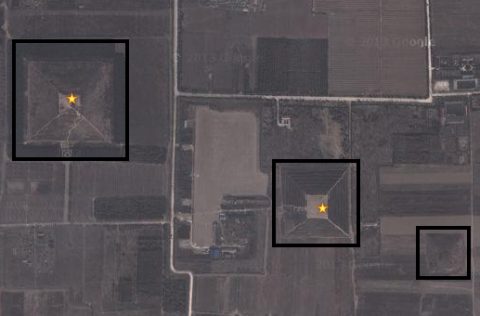
A satellite image of the Pyramids of Giza (Egypt):
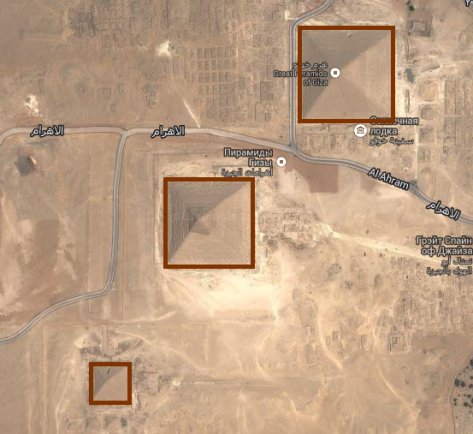
Maxim Yakovenko: “For comparison purposes let’s examine satellite images of the three Pyramids of Giza and the three pyramids in YaSenGarden, Xi’an. We see that the pyramid size proportionally decreases from the largest Pyramid of Cheops to the smallest Pyramid of Menkaure on the Giza Plateau, and the same picture is visible in YaSenGarden. Both groups of pyramids are identically arranged, oriented at the cardinal directions, and the ratio of distances between pyramids in Egypt and in YaSenGarden is strikingly similar. Hence, we may conclude the builders of the pyramids relied on common knowledge.”
- American researcher Vance Tede also took interest in the Chinese pyramids. “The main thing that interested me,” he wrote, “was the geographic coordinates of the Chinese pyramids. Xi'an is at latitude 34 north. The pyramids arrangement is very similar to that in Egypt, which suggests the pyramids were constructed by ancient builders who belonged to the same civilization. I vaguely knew that each of the pyramids performed a specific function and there was some geometric correspondence between the pairs of pyramids in different parts of the world. While the Egyptian complex is located at latitude 30 north, the Chinese set of pyramids is at latitude 34. I believe someday many different correlations between the coordinates of Giza and Shaanxi valleys will be calculated.”
- German engineer and architect Helmut Fuernreder has discovered that some of pyramids in China were built according to the golden ratio. For instance, if we divide the height of the (Great) White Pyramid (300 m) by the length of its base (485 m), we get 0.618.
- A pyramid is a tetrahedron per se, whereas in China (as mentioned above) an antipodal pyramid was discovered, i.e. a pyramid-shaped hollow. At that, we encountered an assumption on the web that pyramids possibly represented octahedrons, not tetrahedrons, by their initial structure. As of today we have no idea whether such information is of any significance, but hopefully this will once be clarified.
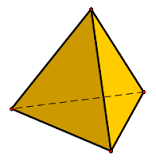
Tetrahedron

Octahedron
- As for the age of Chinese pyramids, researchers are in permanent disputes as well, because just like in Egypt the hypothesis that these are royal sepulchres has neither been thoroughly verified nor confirmed. Many pyramids may certainly be ascribed to the time of royal dynasties, while others were constructed much earlier as researchers believe. Analysing satellite images of the groups of pyramids located to the east of Xi’an, the British writer and researcher of ancient civilizations Graham Hancock, whom we already know owing to the Orion-Draco Pendulum and other articles, has made an assumption that location of these pyramids coincides with location of the stars in the constellation of Gemini on the vernal equinox day in 10,500 BC. Unfortunately, we have not found any detailed information by Graham Hancock on the Chinese pyramids.
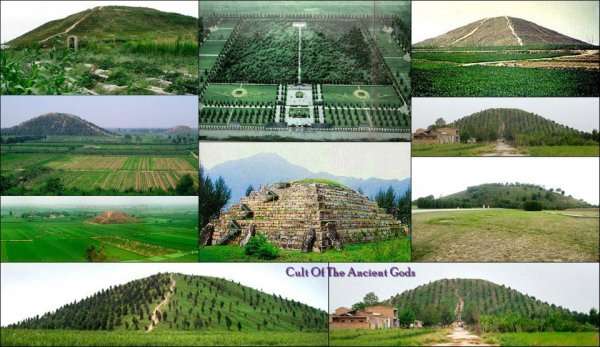
Well, dear friends, another fact seems to be proved: most of interesting discoveries on pyramids and other monumental structures on the planet are made by independent researchers, journalists and lovers of antiquities and represent sensations that are not confirmed by official science. Whereas official science still roams in a “paid-for mirage”, regarding its own hypotheses as the absolute truth and making other people believe in them. Yet, as we can see, in the light of the Primordial Knowledge which is now in the human world, more advanced views of the old mysteries emerge, and there are more and more people who search for the truth and, most importantly, feel it. Everything’s indeed in our own hands.
Prepared by Eva Kim (Russia)
A video in addition:
 Pyramids in China. Secrets of the Sons of Heaven
votes:
329
Pyramids in China. Secrets of the Sons of Heaven
votes:
329
|

Project Aim










Garrett 31.10.2018 20:31 Reply ↵
Great resource, thank you for putting this together.